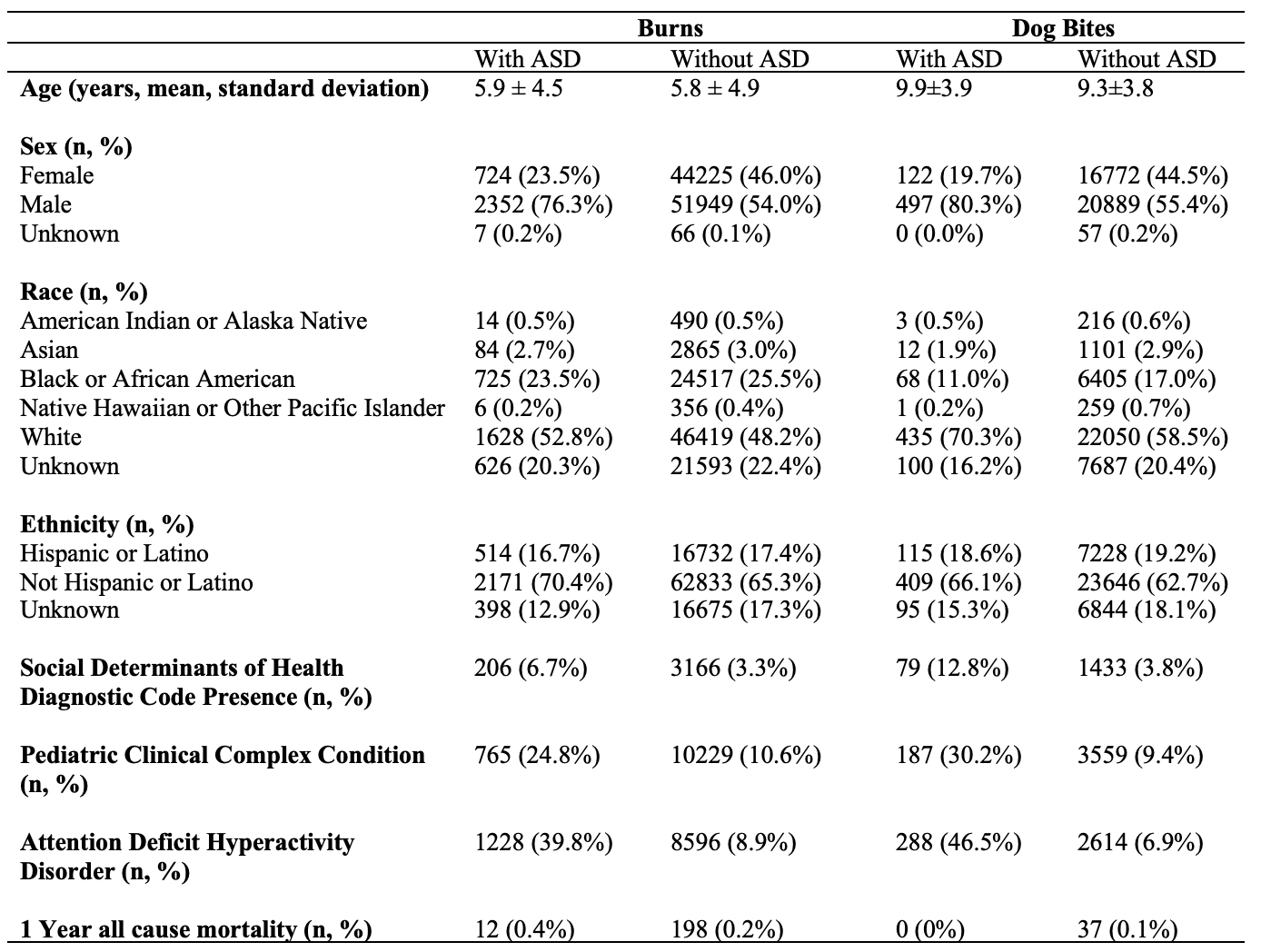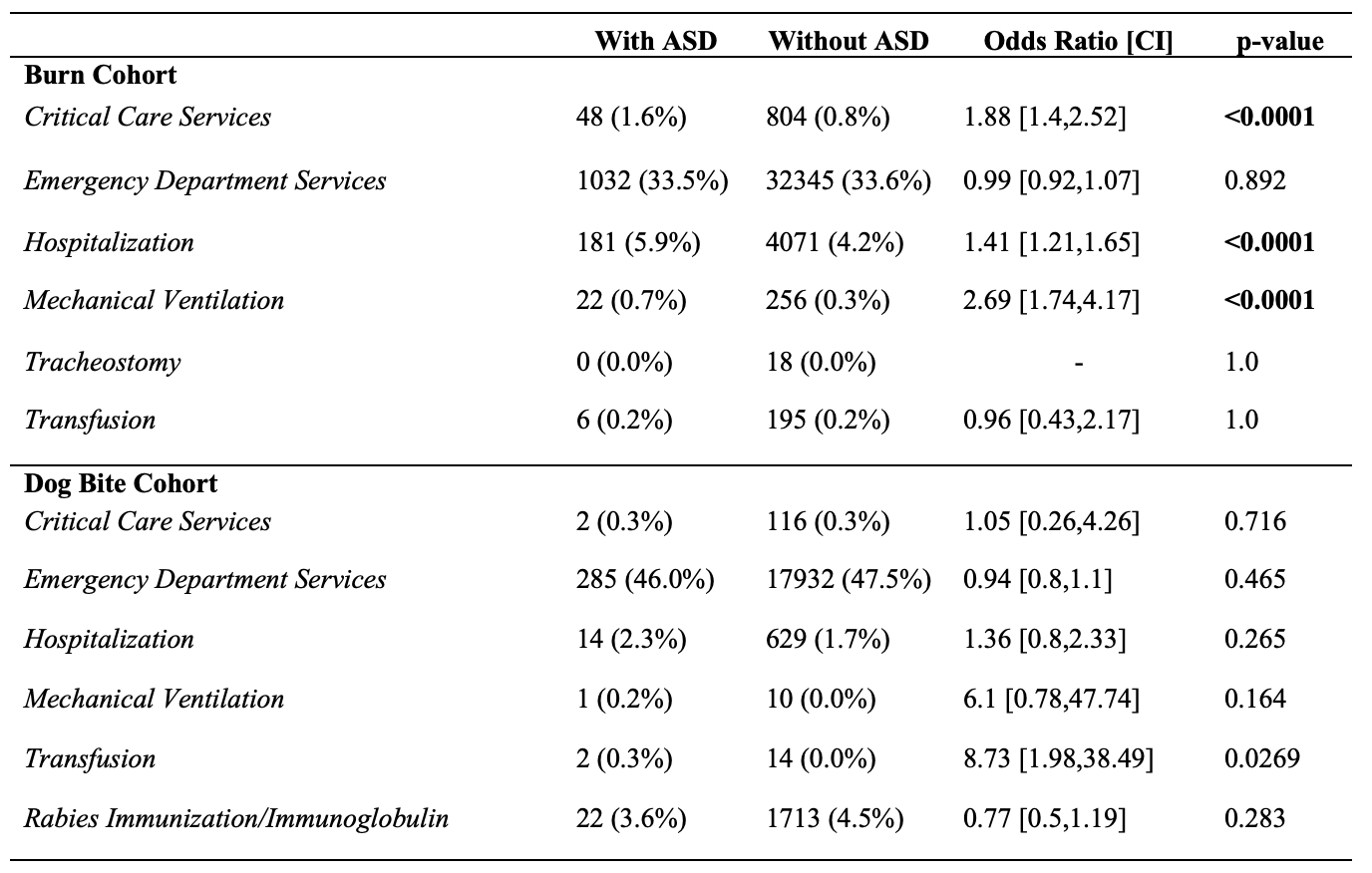Developmental and Behavioral Pediatrics
Session: Developmental and Behavioral Pediatrics 2: Autism
399 - Retrospective Analysis of Burn and Dog Bite Injuries in Children with Autism Spectrum Disorder
Friday, May 3, 2024
5:15 PM - 7:15 PM ET
Poster Number: 399
Publication Number: 399.147
Publication Number: 399.147

Lauren Mazur, BS (she/her/hers)
Medical Student
Pennsylvania State University College of Medicine
Hershey, Pennsylvania, United States
Presenting Author(s)
Background: Autism spectrum disorder (ASD) is a neurodevelopmental disability that can lead to difficulties with communication, sensory responsiveness, and behavior regulation. This can significantly impact how a child interacts with and navigates their surrounding environment, potentially placing this patient population at increased risk for unintentional injury. Two forms of unintentional injury children with ASD may be more likely to experience include burns and dog bites. However, little is known about clinical outcomes of these scenarios. Understanding how this patient population is injured in these circumstances and their outcomes can potentially inform clinical practice.
Objective: To evaluate the (1) subject characteristics; (2) clinical care provided; and (3) mortality in children with ASD who have suffered a burn or dog bite injury. We hypothesized that this patient population would have similar mortality and clinical management requirements when compared to children without ASD.
Design/Methods: This is a retrospective observational cohort study utilizing the TriNetX ® EHR database of subjects aged 0 to 18 years with burn injury or dog bite associated diagnostic codes. Data were analyzed for demographics; diagnostic, medication, and procedural codes; and mortality.
Results: We analyzed 99323 subjects (n, %) coded for a burn injury [3083 (3.1%) with ASD vs. 96240 (96.9%) without ASD] and 38337 subjects coded for a dog bite injury [619 (1.6%) with ASD vs. 37728 (98.4%) without ASD]. Children with ASD and a burn injury had a higher odds of 1-year all-cause mortality [1.9 (1.06, 3.40), p = 0.004], need for critical care services [1.88 (1.40, 2.52), p < 0.001], and mechanical ventilation [2.69 (1.74, 4.17), p< 0.001]. Children with ASD and a dog bite injury had higher odds of a traumatic injury to the head [1.34 (1.15, 1.57), p < 0.001]. There was no difference in critical care services, hospitalization, mechanical ventilation, and rabies administration in the dog bite cohort.
Conclusion(s): Children with ASD may be at increased risk for burn injuries and dog bites. Those with ASD who experienced burns had higher odds of mortality and critical care needs. While dog bite injuries were not associated with increased mortality or critical care interventions, our study found that this patient population had a higher odds of traumatic head injuries when compared to children without autism. Further study is needed to understand the impact and pattern of burn and dog bite injuries in this patient population, to limit mortality, and to inform anticipatory guidance.



